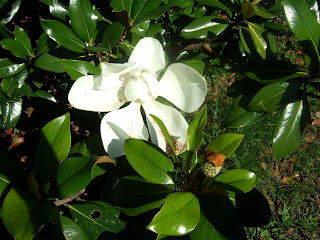.

There are things that happen just at Christmas time. A chorus of children, in long blue robes, singing traditional carols in a cold church in a December evening is one of them.
A small orchestra of violins, with an oboe and a trumpet, accompanied the little voices and the talented soloists in the sacred music composed by Antonio Vivaldi in the eighteenth century, and in famous Italian and English Christmas songs. Following the hands of the young director, touching voices and notes filled the naves of the San Marco Basilica in Milan, ascending the pillars of the thirteenth century up to a vaulted ceiling accustomed to silent prayers. Sparkles of gold radiated from the altar. Details of frescos and marbles appeared in the dim light. Candles burnt in front of chapels adorned with sober flower decorations. In the last chapel on the right, the ancient story of the Nativity was told by the elegant and fragile figures of a paper crib of the eighteenth century. Francesco Londonio, Italian portrait painter and engraver, interpreted this tradition creating two scenes with these life-size characters painted on paper glued on wooden structures. In the background, the newborn Babe laid in the manger, his little arms wide open, surrounded by Mary, Joseph, and humble characters kneeled in prayer. They looked at the Babe with marvel and hope, a musician with a trumpet, peasants and shepherds in their poor dresses with a sheep or a basket of fruit, a pilgrim without shoes next to a man with an horse. In the foreground, the three Magi paid homage to the Child. The three Oriental kings came in procession in their rich mantles, ermine capes, golden crowns and turban to offer gold, incense and myrrh to the little Child. On the right, a group of children took care of their exotic dromedaries. But, there was no time to linger on the minute, exquisite details of the composition; music captured all the attention. The Gloria in Excelsis Deo was soon finished, people hurried home after greetings and embraces, the head full of notes, the hearts full of joy.
A small orchestra of violins, with an oboe and a trumpet, accompanied the little voices and the talented soloists in the sacred music composed by Antonio Vivaldi in the eighteenth century, and in famous Italian and English Christmas songs. Following the hands of the young director, touching voices and notes filled the naves of the San Marco Basilica in Milan, ascending the pillars of the thirteenth century up to a vaulted ceiling accustomed to silent prayers. Sparkles of gold radiated from the altar. Details of frescos and marbles appeared in the dim light. Candles burnt in front of chapels adorned with sober flower decorations. In the last chapel on the right, the ancient story of the Nativity was told by the elegant and fragile figures of a paper crib of the eighteenth century. Francesco Londonio, Italian portrait painter and engraver, interpreted this tradition creating two scenes with these life-size characters painted on paper glued on wooden structures. In the background, the newborn Babe laid in the manger, his little arms wide open, surrounded by Mary, Joseph, and humble characters kneeled in prayer. They looked at the Babe with marvel and hope, a musician with a trumpet, peasants and shepherds in their poor dresses with a sheep or a basket of fruit, a pilgrim without shoes next to a man with an horse. In the foreground, the three Magi paid homage to the Child. The three Oriental kings came in procession in their rich mantles, ermine capes, golden crowns and turban to offer gold, incense and myrrh to the little Child. On the right, a group of children took care of their exotic dromedaries. But, there was no time to linger on the minute, exquisite details of the composition; music captured all the attention. The Gloria in Excelsis Deo was soon finished, people hurried home after greetings and embraces, the head full of notes, the hearts full of joy.
 Notes:
Notes:Concerto di Natale, (Christmas Concert)
20th December 2012, Milan
Piccoli Cantori di San Marco
Le Voci del Mesma
Orchestra Ars Liberalis
Program:
Neve, Gloria, Adeste fideles, LAUDAMUS TE, Domine Deus , In una greppia, Propter magnam gloriam, La danza dei pastori, Domine Fili Unigenite, CUM SANCTO SPIRITU, What child is this? God Rest You Merry, Gloria in Excelsis Deo, Hark!The Herald Angels Sing











